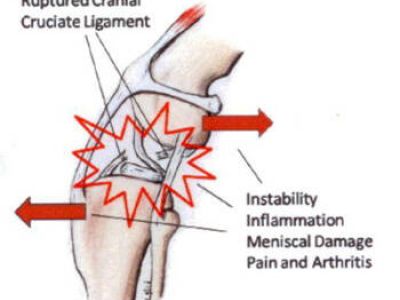PennHIP

PennHIP is a scientific method to evaluate a dog for its susceptibility to develop hip dysplasia. The radiographic procedure involves a special positioning of the dog so that the dog's "passive hip laxity" can be accurately measured. In simple terms, passive hip laxity refers to the degree of looseness of the hip ball in the hip socket when the dog's muscles are completely relaxed.
Research has shown that the degree of passive hip laxity is an important factor in determining susceptibility to develop Degenerative Joint Disease (DJD) later in life. Radiographic evidence of hip DJD, also known as osteoarthritis, is the universally accepted confirmation of CHD.
How does PennHIP differ from evaluation methods which use the Hip Extended Position?
PennHIP differs in some very fundamental and important ways.
1. PennHIP was developed and tested following strict scientific protocol and the results of these studies have been published (and continue to be) in peer-reviewed scientific journals. More than a 2 decades of research and analysis has produced a body of information in support of PennHIP's effectiveness. As with all diagnostic tests, PennHIP's accuracy is not 100% but in direct comparisons it is far superior to any other available diagnostic method.
2. Passive hip laxity is objectively measured and the resulting Hip Evaluation Report is not issued in a pass/fail framework. PennHIP specifically measures passive joint laxity and includes the quantitative measurement in its report. Based on the degree of laxity, the individual dog is then ranked relative to other members of the same breed. For example, a dog receiving a ranking in the 70th percentile means that 30% of its breed members have hips that are tighter. This allows breeders to easily identify those animals with tighter hips within each breed. Studies show that dogs with tighter hips are less likely to develop CHD and pass that genetic tendency on to future generations.
3. Because PennHIP is measuring maximal passive hip laxity, the position of the patient is very different from the hip extended position.
4. The hip extended position has been used for more than thirty years to screen hips. Current studies show a wide variation between the scores readers of the hip extended view produce. Furthermore there is no study to show that any reduction in the incidence of hip dysplasia has occurred improvement using the hip extended view.
Most importantly, the heritability of the diseased phenotype scored in the hip extended view has not been studied in most breeds of dogs. Knowledge of heritability is critical to determine whether selection pressure will produce genetic change. Estimates for the heritability of passive hip laxity drawn from analysis of full pedigrees for the breeds examined thus far in the studies show high values (for German Shepherd Dogs, heritability 0.61).
5. The PennHIP method is based on strict quality control. To take PennHIP radiographs, veterinarians must undergo training and a certification process to demonstrate competency. The data generated from PennHIP undergoes regular review and statistical analysis so that useful information, by breed, is available to judge progress toward reducing CHD. For optimal validity, it is mandatory that all PennHIP radiographs be submitted for analysis and inclusion in the PennHIP database. This policy eliminates the practice of pre-screening radiographs and sending only the best for evaluation, resulting in biased hip data for any given breed.



